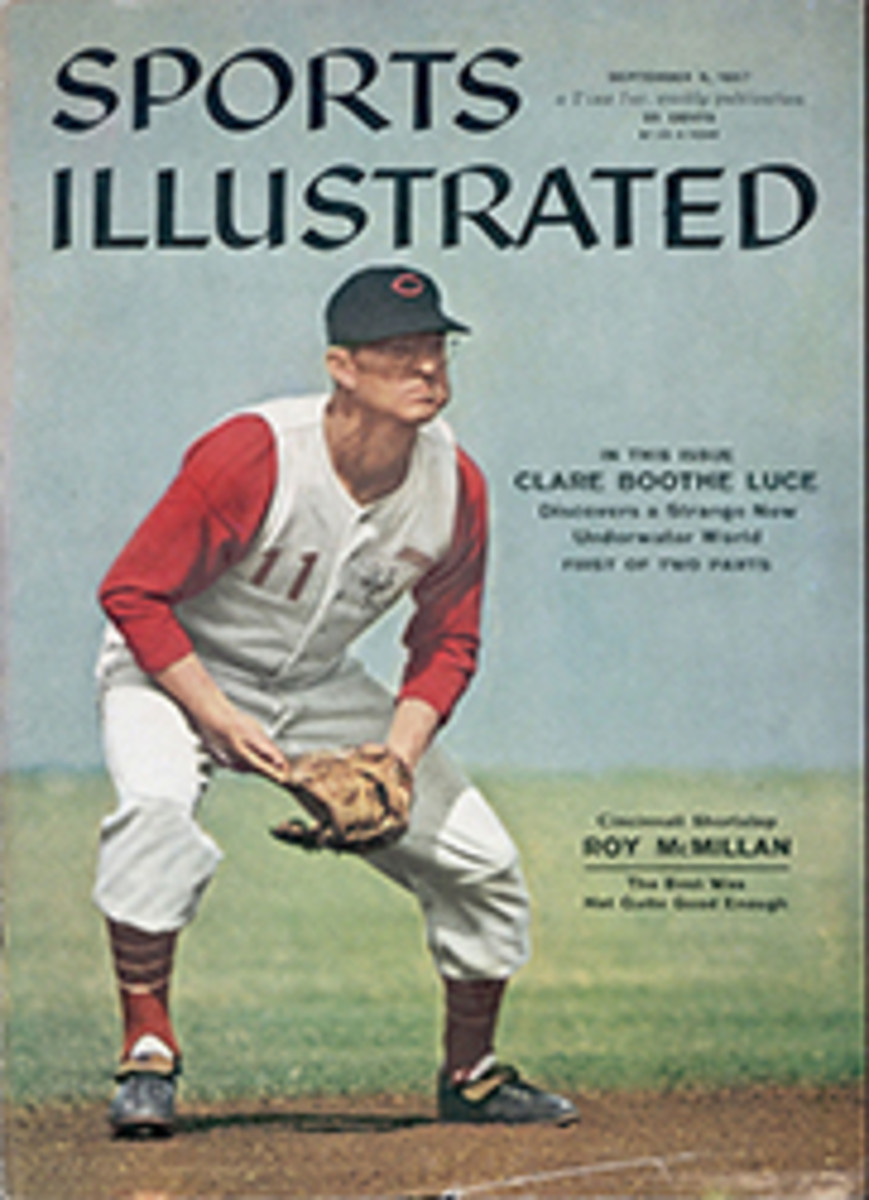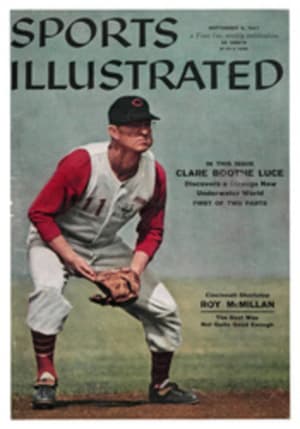
THE POINT OF FITNESS
On the grounds of the U.S. Military Academy at West Point, the 119 members of the recently appointed President's Citizens Advisory Committee on the Fitness of American Youth are holding their first meeting this week with the President's Council on Youth Fitness. Their joint purpose is to determine the progress made on fitness problems and to present a report to the President. The Advisory Committee's special function is to evaluate measures to achieve more active American youngsters, and the Council is the President's link with the Committee.
It is perhaps a happy coincidence that the two groups are meeting at West Point, where the physical education program is worth their consideration. One of the best in the country, it overcomes many of the weaknesses in U.S. physical education (SI, Aug. 5). But like other schools, both military and civilian, West Point has felt the devastating effects of the increasing inactivity of American youth. Each year it is faced with the dismaying spectacle of the progressively worsening physical condition of the candidates for the academy. Lately, approximately half the candidates have been failing their physical entrance test because of overweight. Last year twice as many plebes as in the previous year were unable to perform more than two push-ups.
The job of making cadets physically fit gets harder and the time margin of safety smaller each year. "We find we have to spend more and more time giving simple strength exercises like pull-ups and push-ups," says Lieut. Colonel Frank J. Kobes Jr., West Point's director of physical education. And there are some components of fitness, like coordination, that are virtually impossible to teach by the time a boy enters the academy at the age of 19. Despite these handicaps, the U.S. Military Academy still continues to bring its cadets up to a height of fitness equaled in few institutions.
One of Colonel Kobes' efforts has been consultation with such fitness experts as Dr. C. H. McCloy of Iowa University, Dr. Arthur Esslinger of Oregon University, Dr. Leonard Larson of New York University, Dr. Hans Kraus and others, who agreed with him that West Point should urge parents and schools to teach basic physical skills to a boy in his early youth. One cadet's misguided mother, for example, would not let her son compete in games for fear that he might get hurt and fail his West Point entrance examination. He almost did fail it—because of physical weakness resulting from his enforced inactivity. Colonel Kobes would like to help educate such parents and to share with other schools the Point's experience in getting—and keeping—boys in shape. "We realize that our program can't move lock, stock and barrel into some other school," says Colonel Kobes. "But our reasons for doing things are just as important in Podunk as they are here."
One aim of the West Point program, unexpected in an institution that leans heavily on strict discipline, is the lifelong voluntary habit of keeping in good shape which is assiduously built into the cadets. This is a goal that civilian schools have attempted to reach, without much success, for years. "We're not just building muscle or ordering cadets to be fit," says Colonel Kobes. "We have to sell the program. If we haven't taught cadets to like being active, they won't be active after they graduate."
That he has been successful is shown in the number of voluntary physical activities for which the cadets give over their precious few hours of spare time at the academy, as well as the sports record of officer graduates. Nine classes answering a questionnaire indicated that even after they were no longer under the colonel's watchful eye, they remained active both as sports participants and leaders of physical training programs.
At graduation the cadet has a fine repertoire of sports skills with which to keep fit for the rest of his life. Golf, tennis, squash, handball and about 10 team sports—he can play them all well enough to enjoy them. He can swim 160 yards in five minutes and is proficient in two of four strokes. To help youngsters compare their physical ability with that of academy cadets, Kobes offers a list of suggestions of standards in a brochure available to the public entitled How Do You Compare with a West Point Cadet? (see box).
West Point, naturally, has objectives in mind which do not necessarily apply to civilian life; also, it is in the advantageous position of being able to make its physical education classes compulsory. Nonetheless, these methods have significance for all. The combination of required physical education classes plus compulsory intramural sports participation attains an ideal of time to teach plus time to apply what has been taught that many other schools have been vainly seeking to achieve for years.
A highly important factor in the colonel's program is that it insures equal attention for all students. At West Point there is none of the wasteful and unfair practice prevalent in many schools of giving the best to the best (who need it least)—that is, of expending all available time, training and equipment on varsity athletes or stars. Certainly there are many fine cadet varsity teams guided by Director of Athletics Earl Blaik, who is also West Point's representative on the President's citizens fitness committee. But only about a quarter of all cadets are involved in varsity athletics. The other three-quarters (about 1,700) take part in Colonel Kobes' physical education program. Here there is no star system; the slogan is "every cadet an athlete." And even cadet varsity athletes, unlike those in most schools, enter Colonel Kobes' sphere for required attendance in intramural sports during seasons when they are not playing their varsity sport.
EACH SPORT ONE SEASON
A nonvarsity cadet must attend intramurals the same number of times for each of his four years: 20 times in the fall and 16 times in the spring, in addition to his physical education classes. In intramural sports each player participates a minimum amount of time during each contest, and a cadet is eligible for each sport only one season. Varsity athletes taking part in intramurals are not eligible for their varsity sport, which prevents stars from competing with average players.
The total time a cadet spends in four years of required sports activity is about equal to that in a college which gives a masters degree in physical education. And this total does not include additional physical training the cadet receives in drilling, bayonet practice and so on.
To run such an extensive program well requires a superior staff—and Colonel Kobes has it. There are five military and 11 civilian members in the colonel's department, all but one of whom have masters degrees. They are assisted in handling the large number of cadets and their activities by senior cadets whom they draw on for help. This also gives the cadet instructors valuable leadership experience. All of the staff are in prime shape themselves and can expertly perform what they teach—a factor which cannot be stressed too much, the colonel believes. His own 6 feet 4 inches and 190 pounds of determination in action can demonstrate everything the cadets are required to do.
In addition to an exceptional staff the physical education department has outstanding and plentiful equipment. West Point has a mammoth six-floor gym, some 329,132 square feet overall, housing three swimming pools, innumerable courts and rooms, an indoor track and rooms full of protective safety equipment. There is one field house, an outdoor track and four main playing field areas, the largest of which is Target Hill on the Hudson (above). From 8 in the morning till dinnertime all facilities are well filled with vigorous activity.
In the final analysis the answer to what makes a program good is the man who runs it. In this case the man, Colonel Kobes, has a broad outlook, deep concern for his job and courage to take action in support of his convictions. He expresses his limitless energy and predilection for action when he says: "So far conferences haven't been too fruitful. Maybe it's time we got down to setting an example on the gym floor." When he leads the President's fitness committee members around West Point this week, he will, in effect, be doing just that.
[originallink:10478016:42701]
PHOTO
SIX SOCCER AND TWO SOFTBALL GAMES ARE GOING ON SIMULTANEOUSLY ON WEST POINT'S 14-ACRE PLAYING FIELD, TARGET HILL

